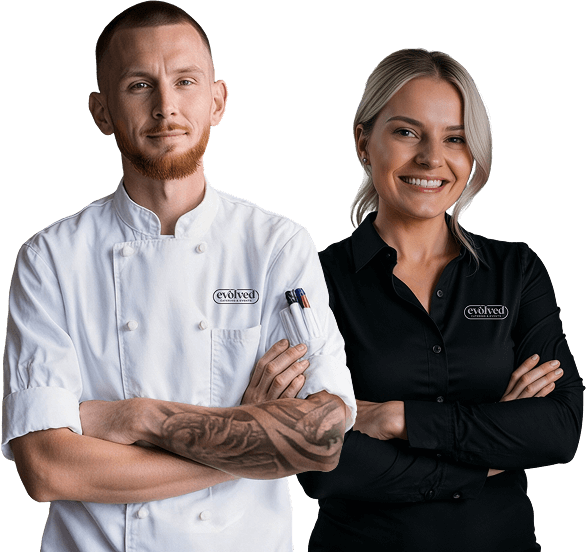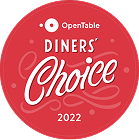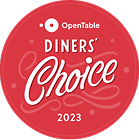Planning an event—whether it’s a wedding celebration in Baltimore, a corporate lunch, or a private family gathering—often raises the question: how do you estimate food for catering? You want everyone satisfied without ending up with extra trays of unused appetizers. Good news, this is easier than it sounds if you focus on a few key factors. Below, you’ll find practical tips on headcounts, meal timing, dietary restrictions, and portion sizes. Let’s walk through each step so you can serve just the right amount of food at your next event.
Gather a precise headcount
One of the biggest factors in any catering plan is knowing how many people you’ll actually feed. Sending invitations and requesting RSVPs gives you a close estimate, but it’s wise to plan for a few extra guests to avoid running short on food (Catering by Bryce). If you expect last-minute arrivals or the possibility of plus-ones, adding a small cushion helps you feel more confident.
- Ask for dietary info: Include a question about dietary needs or preferences in your RSVP form.
- Check with the venue: Some event halls track capacity and can help you confirm final numbers.
- Estimate safe margins: If you’re expecting 100 guests, plan for about 5–10 extra portions.
If you need more guidance on factoring headcounts into budget, explore our tips on how much food for 50 guests?.
Recognize event time and menu mix
The time of your gathering can impact how much guests eat. Evening events call for heartier meals, while early-afternoon functions usually require lighter portions (Catering by Bryce). Menu variety also matters because people tend to sample more if they see multiple dishes. Including a balanced spread—proteins, vegetables, vegetarian options, and a sweet treat—keeps everyone feeling catered to.
- Morning or brunch events: Lean toward lighter portions, such as pastries, fresh fruit, and smaller protein servings.
- Lunch or midafternoon: Include a few hearty choices like pasta or sandwiches, then round out with salads and desserts.
- Dinner or evening receptions: Plan for more generous helpings of protein and side dishes since guests usually expect a full-course meal.
Variety is good, but too many options can lead to higher consumption. If you’d like more insight on controlling costs while still offering enough menu choices, you can check out how do i price my catering?.
Prepare for dietary restrictions
Dietary needs can be wide-ranging, from food allergies to personal preferences. In the United States, around 32 million people have some kind of food allergy, and a portion of those require emergency medical care annually (Apple Spice). This means you’ll want to coordinate carefully with your caterer if you have gluten-free or nut-free guests, or if you’re serving a crowd with cultural or religious restrictions around meat or alcohol.
- Ask early: Include dietary preference questions on RSVPs or surveys.
- Offer diverse dishes: Consider gluten-free and vegan selections alongside traditional entrees.
- Label your menu: Ensuring guests can spot safe foods reduces confusion and helps everyone relax.
When it comes to quantity, make sure any special dietary dish is in line with the overall counts so those guests aren’t left with empty plates. If you want more specific tips on portioning for all kinds of events, you might visit how do you calculate catering per person?.
Calculate your portion sizes
Balancing the right portions can feel like guesswork, but caterers often use standard guidelines. For plated meals, a typical approach is 4–6 ounces of cooked meat per person. Buffets may need 6–8 ounces per guest. Soups, salads, and side dishes each have benchmarks too (Webstaurant Store).
Below is a quick table you can use as a starting point:
| Menu Item | Suggested Portion |
|---|---|
| Appetizers | ~1.5 servings per guest |
| Soup | 1 cup per guest |
| Side Salad | 1 cup per guest |
| Main Salad | 2 cups per guest |
| Protein (plated) | 4–6 oz per guest (cooked) |
| Protein (buffet) | 6–8 oz per guest (cooked) |
| Sides (pasta) | 1–2 cups per guest |
These numbers can shift based on whether your crowd loves second helpings. A dinner wedding with big eaters might need a bit more, while a midday conference could manage with less. If you’re catering just for friends and family, or you’re testing out smaller events, see how much should catering for 30 people cost? for extra cost-saving hints.
Always plan a leftovers buffer
Running out of food is a caterer’s worst nightmare, so keeping a small cushion is worth the peace of mind. In fact, most experts recommend you aim for about 5–10% more food than your headcount requires (Catering by Bryce). This way, everyone—even late arrivals—gets a full plate.
- Ensure easy storage: Have take-home containers for guests or plan donations to local shelters.
- Keep backup items ready: Simple, quickly prepared sides like extra rice or bread can stand in if you run low on a main dish.
- Monitor real-time consumption: Train your staff or designate someone to watch which dishes disappear fastest so you can adjust if needed.
If you’re curious about cost planning for festivities of all sizes, you might also check out how do you calculate catering per person?.
Wrapping up and next steps
Estimating the right amount of food comes down to a few core steps: gather an accurate headcount, consider the time of day, cater to dietary needs, and follow standard portion guidelines while remembering a small buffer. You’ll keep your guests happy, reduce waste, and manage costs effectively.
If you’d like to dive deeper into pricing strategies once you’ve nailed down quantities, see how do i price my catering?. And if you’re scaling up or down, you can always revisit how much food for 50 guests? to refine your plans. You’ve got this—every portion you plan is a step closer to a memorable and smoothly run event.









